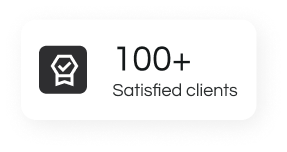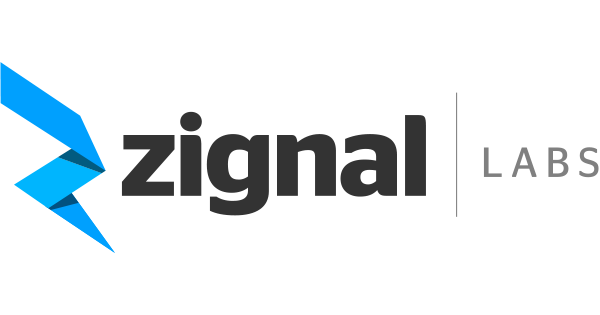Hire the Top 1% of Remote Medical Billers
- Freelance contractors
- Full-time roles
- Global teams



Trusted by 3,000+ businesses worldwide






Why Choose DigiWorks?

Faster Hiring
Get matched with top medical billers in under 72 hours. All candidates are pre-vetted for U.S. healthcare billing expertise, compliance, and communication skills.

Risk-Free Hiring
No upfront costs. Start with a free trial, and every hire comes with our replacement guarantee — so you only pay if you’re fully satisfied.

Build Real Teams
Your biller isn’t a freelancer on the side — they’re a dedicated teammate, trained in your systems, aligned with your clinic’s goals, and committed for the long term.
Service Breakdown
Claims Management
Coding Review
Follow-Up
Patient Billing
Denial Management
Follow-Up
Video Customer Testimonials

Remodelmate
Logan Phillips (Head of Operations)
Start Up
Marketplace



Remodelmate
Start Up
Marketplace

Remodelmate
Start Up
Marketplace

Remodelmate
Start Up
Marketplace
Founder Story

Rolphy
CEO (Founder)
Hi, I’m Rolphy!
- Top 2% of vetted offshore talent.
- System-driven hiring + onboarding that actually works.
- A partner who gets it because I’m in the trenches building my own companies too.
- I want to take DigiWorks from $0 to $100M ARR.
- I want to build generational wealth for my team and partners.
- I want founders to look back and say, “DigiWorks is the reason my company scaled.”
Find Out How DigiWorks Helps Businesses Hire Contractors
See a Few of Our 45k+ Pre-vetted Candidates

Jose L.
Sr. Payroll Specialist from...

Jose L.
Sr. Payroll Specialist from...
$2.5k
$2.5k

Jose L.
Sr. Payroll Specialist from...

Jose L.
Sr. Payroll Specialist from...

Jose L.
Sr. Payroll Specialist from...
Top Talent, Transparent Compensation
Virtual Medical Biller
(Entry Level)
- Bachelor’s degree or diploma in Medical Billing, Healthcare Administration, or related field
- 1–2 years of medical billing experience
- Basic knowledge of ICD-10, CPT, and HCPCS coding
- Familiarity with EHR/EMR systems like Kareo, DrChrono, or AdvancedMD
- Experience submitting claims and posting payments
- Strong attention to detail and ability to meet deadlines
Candidate Compensation
Virtual Medical Biller
(Mid-Level)
- Degree in Healthcare Administration, Medical Billing, or Accounting
- 3+ years of U.S. medical billing experience
- Skilled in full-cycle billing: charge entry → claims submission → payment posting → denial resolution
- Proficient in EHR and clearinghouse platforms like Athenahealth, PracticeSuite, or Kareo
- Strong understanding of HIPAA compliance, payer policies, and insurance guidelines
- Comfortable managing 100–200 claims per week
- Excellent problem-solving skills and ability to work independently
Candidate Compensation
Senior Virtual Medical Biller / RCM Specialist
- Advanced certification preferred: CMRS, CPB, or CPC
- 5+ years of medical billing and revenue cycle management experience
- Deep knowledge of ICD-10/CPT coding, payer contracts, Medicare/Medicaid billing, and appeals
- Proven track record of reducing claim denials and improving collection rates
- Experience leading denial analysis, reporting, and revenue optimization strategies
- Expertise with EHR/EMR systems, clearinghouses, and claims dashboards
- Ability to train junior billers and manage billing team operations
Candidate Compensation
What does a virtual medical biller do?
Why should I hire a virtual medical biller instead of an in-house biller?
At Digiworks, we prioritize customer satisfaction and high-quality execution. Our expert social media team has hands-on experience managing social media efforts across various social media platforms. The assessment of social media performance happens through analytics with metrics and listening tools for obtaining practical insights. Detailed analytics and proper post scheduling enable us to respond quickly with meaningful interactions.
Are DigiWorks’ virtual medical billers trained in U.S. healthcare billing standards?
Yes! Digiworks helps companies build customized social media approaches that fulfill their unique business requirements. To create an effective social strategy our social media experts inspect social media activity and audience engagement levels and business success metrics. Whether you need a social media content calendar, social media marketing agency support, or digital marketing communications expertise, we provide valuable insights and relevant content.
Through our social media management platform, we offer automated reports, custom reports, and seamless integration with Google Ads, Facebook Ads, Google Analytics, and Google Search Console to optimize your digital marketing efforts.
How does DigiWorks ensure HIPAA compliance and data security?
Digiworks has social media experts with years of practical experience across the social media sector through their social media management expertise. Experts at Digiworks use their knowledge to devise content posts while arranging publication dates and oversee online content distribution across multiple social channels. Their knowledge spans social media strategy, social content creation, and social media marketing campaigns. Moreover, they stay updated on the latest social media trends and utilize social media management tools to ensure optimal engagement with social media users and boost the overall social presence of our clients.
What billing software and EHR systems can DigiWorks’ billers work with?
At Digiworks, we recognize the importance of reputation management in the digital age. Our social media specialists utilize social listening features and advanced tools to monitor online activity across social media networks. We operate actively to handle customer service through our efforts to answer negative assessments and responses to deliver quicker responses and better customer satisfaction. An implemented social media strategy enables us to build our clients’ Internet identity while converting customer opinions into business expansion knowledge.
How much does it cost to hire a virtual medical biller through DigiWorks?
Absolutely! Digiworks offers comprehensive social media analytics and social media performance reports. Our service generates comprehensive social media reports which monitor audience participation rates along with social campaign performances and social remarks.
Our team monitors social media performance and schedules posts through Social Media Analytics tools and Google Analytics to achieve peak time engagement. Through these reports organizations gain specific knowledge about their social media approach which enables them to make better decisions for enhancing their social media advertising achievements and business outcomes.
Can DigiWorks provide multiple virtual medical billers if my practice grows?
Digiworks establishes a culture of open communication which enables full transparency during social media project management with our customers. Our team of social media professionals provides ongoing support by giving updates along with answer queries and manage collaboration on every project. We achieve audience engagement through smooth communication by employing sophisticated social media tools across multiple social media channels.
Our software solution monitors social media performance metrics while handling profile supervision processes that keep clients constantly updated. Whether it’s social media content creation, social media posts, or implementing a social media strategy, we work closely with our clients to achieve their business success.
How do you match us with the right virtual medical biller?
At Digiworks, we excel in handling all aspects of social media advertising. From social media marketing campaigns and digital advertising to creating actionable strategies and analyzing social media analytics, our team offers social media management and social media marketing expertise. Our social media marketing management center focuses on achieving innovative results and expands our audience reach to maintain customer satisfaction.
Every marketing campaign receives tracking through Google Ads and Facebook Ads and Google Analytics which generates detailed analytics and custom reports. We aim to improve our social media methods so clients reach their marketing targets.
How quickly can I get started with a DigiWorks virtual medical biller?
At Digiworks, we believe in offering flexibility to our clients. There are no long-term commitments required for our social media management services. We provide two options to our clients who can hire us through individual projects or subscribe to continuous social media management services.
Our dedication to serving your requirements includes both our social media marketing strategies and our customized social media campaign solutions. The social media team remains fully prepared to deliver essential advice which supports your business growth and achievement.
FAQs
Stop Losing Revenue To Denied Claims And Admin Chaos.
3,000+ Happy Customers And Counting

Dr. Amanda Lee
Founder & Primary Care Physician — Horizon Family Clinic

Jose L.
Sr. Payroll Specialist from...

Sarah Johnson
Practice Manager — Peak Orthopedics

Raj Patel
CEO — NovaCare Urgent Clinics

Raj Patel
CEO — NovaCare Urgent Clinics
Capabilities of Medical Biller
Capabilities of Medical Biller
End-to-End Revenue Cycle Management (RCM)
- Charge capture & entry
- Claims submission & follow-ups
- Payment posting & reconciliation
- Denial management & appe
- Patient invoicing & collections
Real-Time Claims Tracking & Reporting
Insurance Verification & Prior Authorizations
Specialized Billing for Diverse Medical Practices
- Primary Care & Family Medicine
- Behavioral & Mental Health
- Orthopedics & Physical Therapy
- Surgery & Anesthesia
- Radiology & Imaging
- Dental, Vision & Other Allied Health Practices
Integration With Leading EHR & Billing Systems
- Kareo
- Athenahealth
- DrChrono
- AdvancedMD
- PracticeSuite
- Epic & Cerner (for enterprise practices)
HIPAA Compliance & Data Security
Denial Management & Revenue Recovery
- Investigate root causes of denials
- Correct coding and eligibility errors
- Resubmit claims quickly
- Appeal unjust rejections
- Track patterns to prevent future issues
Patient Billing & Payment Support
Performance Optimization Through Analytics
- Clean claim rates
- Denial percentages
- Days in accounts receivable (A/R)
- Payer-specific performance
- Track patterns to prevent future issues
Scalable Medical Billing Teams
Ongoing Support, Training & Compliance Updates
Key Stats Snapshot
- 68% of enterprises have increased AI investment in the past 12 months.
- 83% of marketers say AI-generated content boosts engagement.
- $1.5 trillion is expected to be added to global GDP by AI by 2030.
- 42% of workers now use AI tools daily—doubling in just one year.
Methodology
Data Sources
Timeframe & Scope
Selection Criteria
The Top 7 Trends
1. Conversational AI Everywhere
Example:
2. Hyper‑Personalization Through Predictive AI
Example:
3. AI‑Driven Content at Scale
Example:
4. AI in Customer Insight & Sentiment Analysis
Example:
5. Augmented Business Intelligence
Example:
6. AI‑Powered Automation of Routine Tasks
Example:
7. Ethical AI and Explainability
Example:
Expert Voices & Case Snippets
Mini‑Quotes
- “AI isn’t just helping us—it’s running half our customer service operations now,” says Jasmine Patel, VP of CX at FinTrust.
- “Predictive personalization has confidented our marketing ROI—now our data tells the story before we even launch,” shares Miguel Torres, Head of Growth at Luxe Retail.
- “Explainability isn’t optional anymore—our clients demand it, and it’s our competitive differentiator,” notes Dr. Evelyn Choi, AI Ethicist at AuditAI.
Micro‑Case Studies
- E‑Comm Brand Alpha used predictive AI to create hyper‑personalized product bundles based on browsing behavior, purchase history, and seasonal trends. The AI dynamically adjusted offers in real time, boosting relevance and reducing cart abandonment. Within three months, the brand saw an 18% increase in average order value and a 30% uplift in repeat purchases, all without increasing paid media spend.
- Law‑Tech Start‑up Beta implemented AI automation for client intake, conflict checks, and appointment scheduling. This reduced administrative workload by 35%, freeing staff for high‑value legal work. As a result, they scaled their client base by 50% without expanding full-time headcount.
Cross‑Trend Connections
- Conversational AI + Sentiment Analysis → real-time customer insight loops that feed into automated support responses.
- AI‑Driven Content + BI Augmentation → data‑informed copy guides that adapt based on engagement metrics.
- Hyper‑Personalization + Ethical AI →dynamic pricing that’s fair, explainable, and compliant.
Implications for Your Business
Small Teams
Enterprise
Agencies & Consultants
Tools & Resources
Data & Analytics Tools
- Google Trends – Track real-time search interest and identify emerging AI topics before they peak. Great for spotting early momentum and seasonal shifts.
- Ahrefs Keywords Explorer – Analyze high-growth search terms, uncover keyword gaps, and assess intent behind AI-related queries to guide content strategy.
- CoSchedule Analytics – Monitor performance of AI-generated content across channels, from social posts to blogs, and optimize based on engagement metrics.
Execution Tools
- Zapier – Automate workflows by integrating AI triggers such as sentiment-detected alerts, lead scoring, or chatbot responses. Ideal for connecting apps and creating seamless, AI-enhanced operations without writing code.
- Buffer – Effortlessly schedule and publish AI-generated content across multiple social media platforms. Great for maintaining consistency, optimizing post timing, and analyzing engagement at scale.
- Canva Smart Templates – Merge AI-written copy with pre-designed visuals for high-impact marketing assets. Enables non-designers to create branded, conversion-ready graphics in minutes.
Further Reading
- Deep‑dive e-book: “AI-Powered Marketing: From Chatbots to Content Automation”
- Industry report: Gartner’s Future of AI in Business, 2025 Edition
- Blog series: “Ethical AI in Practice” on Digiworks’ Insights Hub, exploring real-world explainability frameworks
Frequently Asked Questions
How often should I update my AI‑driven trend strategy?
Quarterly updates are ideal—AI evolves fast, and fresh data ensures relevance.
Which trend will yield the fastest ROI?
Conversational AI and AI content tools often deliver ROI in weeks.
Do these trends apply globally?
Yes—AI adoption is universal, though verticals like finance and retail often lead.
Is ethical AI critical from day one?
Absolutely—starting with transparency builds trust and eases future scaling.
Conclusion & Next Steps
Recap Top Trends
- Conversational AI Everywhere – Enables 24/7 customer support and engagement, slashing service costs and improving satisfaction.
- Hyper‑Personalization – Uses predictive analytics to deliver tailored offers and experiences, significantly boosting conversions and loyalty.
- AI‑Driven Content at Scale – Accelerates content production while maintaining brand voice and SEO performance.
- AI‑Enabled Sentiment Insights – Surfaces real-time customer feedback to guide product, support, and reputation decisions.
- Augmented BI – Empowers non-technical teams to access intelligent insights via natural language.
- AI Automation of Tasks – Eliminates repetitive work, unlocking productivity and focus.
- Ethical & Explainable AI – Builds trust, ensures fairness, and supports long-term compliance across industries.
Ready to embed these trends into your strategy?
Don't forget to follow us on social accounts
Related resources

10 Ways to Delegate Effectively (Without Losing Control)

10 Best Virtual Assistant Companies in 2025

How to Scale Your Business in 2025 Without Overloading Your Team

5 Ways Virtual Assistants Are Helping Nonprofits Do More with Less

Top 10 Industries That Are Scaling Faster with Virtual Assistants

